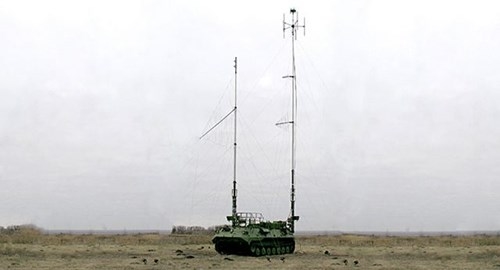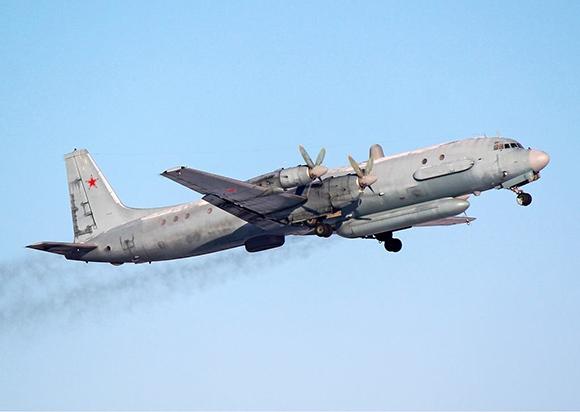The Kremlin could soon control the heart of the Middle East. It could only be a matter of days and make it impossible for the air and land forces of the Coalition to carry out any military operation after coordination with the Russians.
The evolution of the strategy in Syria, foresees a massive use of the Ilyushin-20 platforms. The latter, which arrived in Syria a month ago, work in concert with the ground systems for electronic warfare Borisoglebsk 2, designed to disrupt communications and enemy GPS systems. Measures that could be seen as essential in an operational redevelopment, but the scope of the systems suggests other purposes.
Map in hand, we know that the Russian Elint aircraft operate from the Syrian al-Hmeineem base and from the Iraqi al-Taqaddum base (at 74 km from Baghdad). Many forget that the base of Latakia is just 288 km away from Israel. Translated means that by flying for 12 hours (with 3500km range), the Il-20 can map a detailed and complete picture of what is happening on the ground. In reality (even if the Russians will never admit it), the sensors of the Il-20 would, in theory, allow them to observe all Israeli activities on the Golan, intercept all communications to and from Jerusalem and monitor all operations of all the bases of the IAF south of Israel. Playing again with numbers, the Russian spy planes would theoretically also have the complete picture of the Dimona nuclear complex in the Negev.
Of course, these are suppositions, but the range of action of the Russian spy four-engined vehicles would allow such activities thanks to the complete avionics suite carried that would allow them to monitor at different distances in any weather conditions.
 To the air capacity, Moscow has added the terrestrial one with the entry into service of nine systems Borisoglebsk 2 based on MT-LB. The choice of these new systems is dictated by the fact that the US continues to communicate with "moderate" rebel groups, the same ones considered hostile (and bombed) by the Kremlin. The new ability to disturb and interrupt all types of encrypted communication has been activated along the coastal plain in the north-west of Syria (in addition to the rebels, the Russians could also intercept the communications of the American special departments. We remember, in fact, that the coordination between Russia and the United States refer only to the air phase and not to the earth phase. The new monitoring and disturbance systems give Russia control of the heart of the Middle East and the ability to spy on or interrupt hostile and non-hostile communications.
To the air capacity, Moscow has added the terrestrial one with the entry into service of nine systems Borisoglebsk 2 based on MT-LB. The choice of these new systems is dictated by the fact that the US continues to communicate with "moderate" rebel groups, the same ones considered hostile (and bombed) by the Kremlin. The new ability to disturb and interrupt all types of encrypted communication has been activated along the coastal plain in the north-west of Syria (in addition to the rebels, the Russians could also intercept the communications of the American special departments. We remember, in fact, that the coordination between Russia and the United States refer only to the air phase and not to the earth phase. The new monitoring and disturbance systems give Russia control of the heart of the Middle East and the ability to spy on or interrupt hostile and non-hostile communications.
Of the version of the Ilyushin-18D-36 Bison, we know almost everything, at least conceptually. Designed from the outset on the IL-18 cell for the acquisition of information on the battlefield (ELINT, COMINT, Optical and Radar intelligence), a Igla-1-type "Side-Looking Airborne Radar" is mounted under the fuselage. The avionics suite includes panoramic A-87P cameras. The ELINT apparatus is given by the "Kvadrat" system. Finally, the "Vishnya" includes all the Communications Intelligence systems managed by eight operators. The Il-20 are all redeployed at the Chkalovskaya base near Moscow.
Separate speech for the Borisoglebsk 2. It is one of Putin's new weapons, jealously guarded by the Russians. In development from the 2004, it has reached the Initial Operational Capacity in the 2010. Deliveries to the Russian army began last February with baptism of fire in eastern Ukraine, in the summer just passed. It has been designed for the suppression of mobile satellite communications and radio navigation systems. Compared to the systems it will replace, Borisoglebsk 2 has a greater capacity for monitoring and suppression, frequency scanning and spatial location accuracy of radio wave emission sources.
The first mechanized infantry unit to receive the new system of electronic recognition and elimination of radio frequency sources operates near Orenburg, in the Urals. The Borisoglebsk-2 is the heart of the radio-electronic war of the Russian army's tactical units. According to the Russians, it is capable of disturbing all the modern radio communication systems and GPS systems used by NATO (including F-35).
 (photo: web / Sputnik)
(photo: web / Sputnik)












